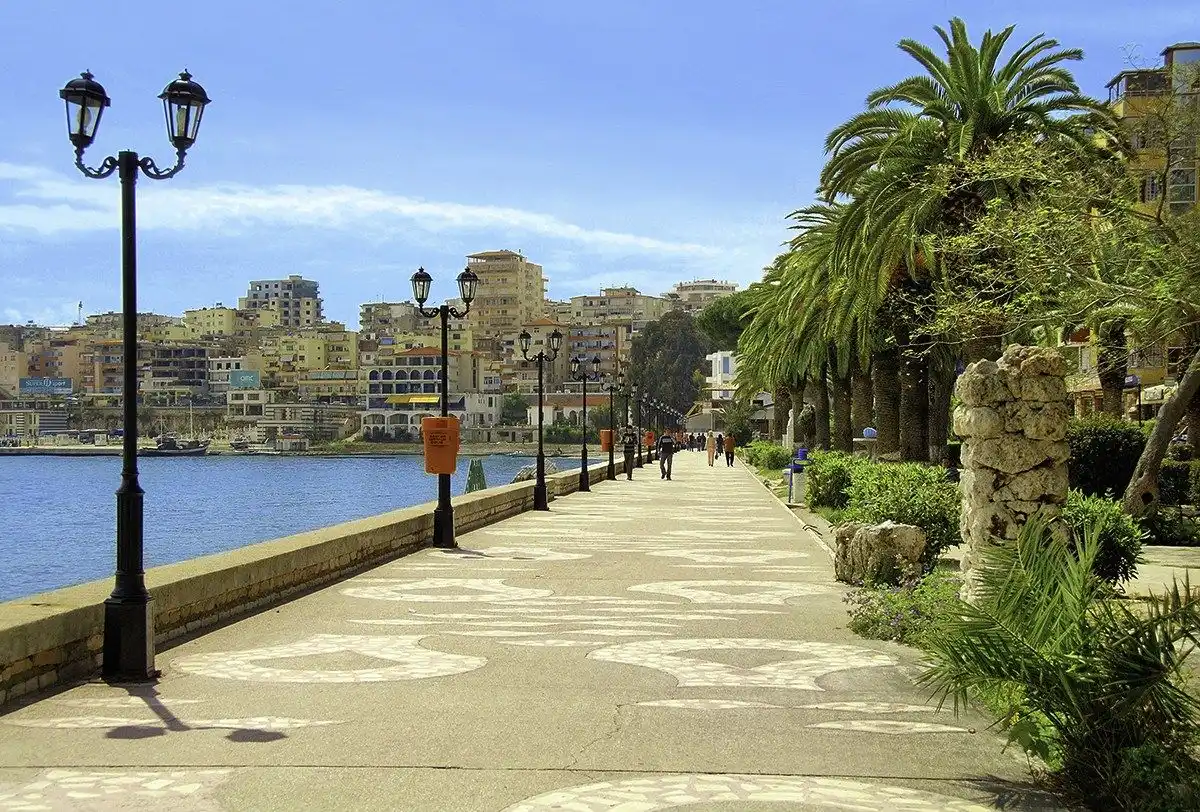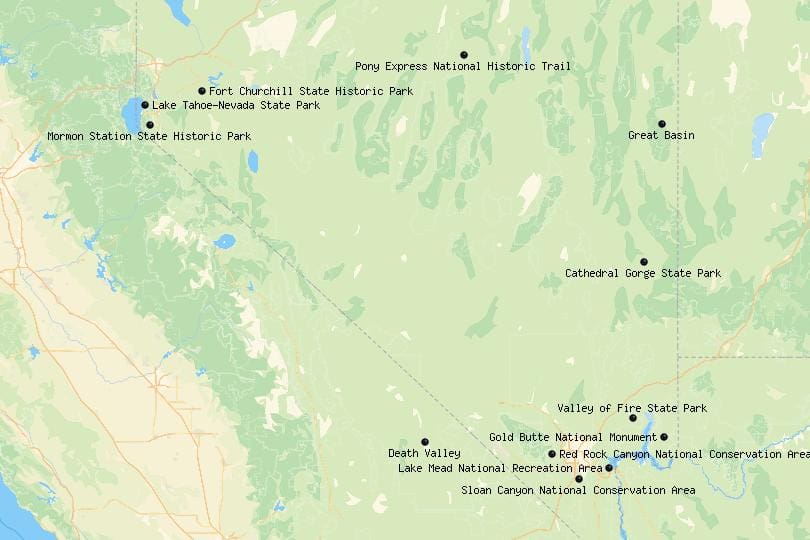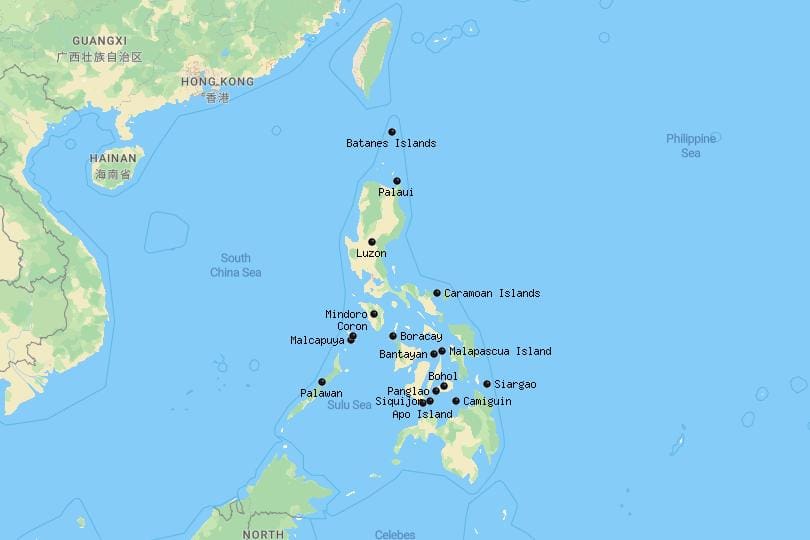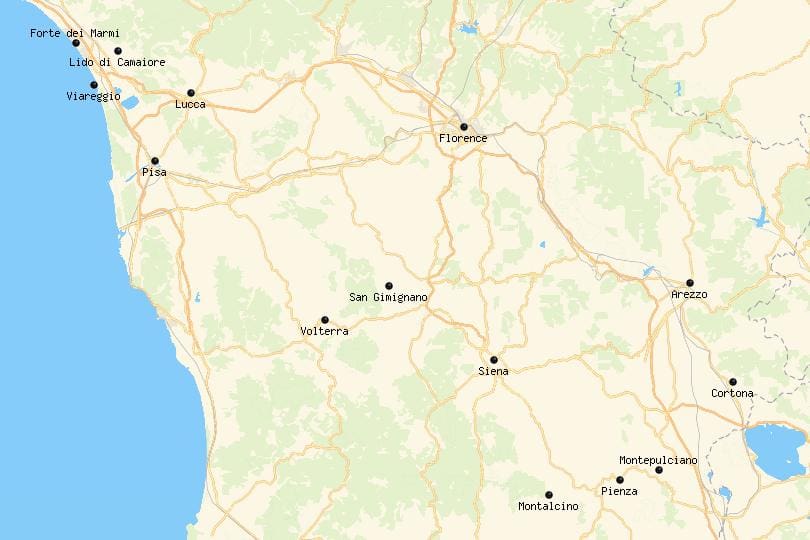Mount Yasur, located on the island of Tanna in Vanuatu, is one of the world’s most accessible active volcanoes. With its frequent eruptions and stunning displays of pyrotechnics, this natural wonder has become a popular tourist attraction. In this article, we will explore nine fascinating facts about Mount Yasur, delving into its geological features, cultural significance, and the unique experiences it offers to visitors.
Introduction
Nestled in the heart of the South Pacific, Mount Yasur stands tall as a testament to the Earth’s fiery nature. This stratovolcano has been captivating adventurers and researchers alike with its explosive eruptions and mesmerizing lava displays. Let’s dive into the awe-inspiring world of Mount Yasur and uncover the secrets it holds.
1. Overview of Mount Yasur
Mount Yasur, also known as the “Lighthouse of the Pacific,” is a shield volcano located on the eastern side of Tanna Island in Vanuatu. It rises to a height of 361 meters (1,184 feet) and boasts a nearly perfect conical shape. Its symmetrical form and consistent volcanic activity make it a prominent landmark in the region.
2. Formation and Location of Mount Yasur
Mount Yasur was formed through the process of subduction, where the Australian tectonic plate is forced beneath the Pacific plate. This collision created a zone of intense volcanic activity along the “Ring of Fire.” Positioned at the convergence of these two plates, Mount Yasur offers a unique opportunity to witness the Earth’s geological forces in action.
3. Volcanic Activity and Eruptions
Mount Yasur is renowned for its regular eruptions, which have been ongoing for centuries. These eruptions are classified as Strombolian, characterized by short-lived bursts of volcanic activity. The volcano’s activity level ranges from minor explosions to powerful blasts that can propel volcanic bombs hundreds of meters into the air.
3.1 Types of eruptions
The eruptions at Mount Yasur can be categorized into two main types: explosive and effusive. Explosive eruptions involve the ejection of ash, gases, and volcanic bombs, while effusive eruptions entail the relatively slow release of lava flows. This dynamic range of eruptions contributes to the volcano’s allure and provides a captivating spectacle for visitors.
3.2 Frequency and intensity of eruptions
Mount Yasur is known for its frequent eruptive activity, with explosive eruptions occurring every few minutes to hours. The intensity of these eruptions can vary, with some producing small ash clouds and others unleashing powerful explosions. This unpredictability adds an element of excitement and awe to the volcano’s allure.
3.3 Impact on surrounding areas
The volcanic activity of Mount Yasur has both positive and negative impacts on the surrounding environment. While the ash and gases enrich the soil, supporting the growth of unique plant species, they can also pose risks to human settlements and agriculture. The local communities have developed a deep respect for the volcano’s power and have adapted their lifestyles accordingly.
4. Geological Features of Mount Yasur
Mount Yasur’s geological features provide valuable insights into the inner workings of a volcano. Understanding these features is crucial for researchers and visitors seeking to appreciate the volcano’s magnificence fully.
4.1 Crater and caldera
The summit of Mount Yasur is dominated by a large crater, measuring approximately 400 meters (1,312 feet) in diameter. This crater serves as a portal to the fiery depths below, offering a glimpse into the volcanic activity. Surrounding the crater is a caldera, a vast depression formed by previous volcanic collapses.
4.2 Lava flows and pyroclastic material
Lava flows, composed of molten rock, are a common occurrence at Mount Yasur. These streams of red-hot magma cascade down the volcano’s slopes, leaving behind striking patterns of cooled, solidified rock. Pyroclastic material, such as volcanic ash and cinders, is also a byproduct of the volcano’s explosive eruptions.
4.3 Volcanic gases
Mount Yasur emits a variety of gases, including sulfur dioxide, carbon dioxide, and hydrogen sulfide. These gases are released during eruptions and create the characteristic plumes that rise above the volcano. While these emissions contribute to the volcano’s grandeur, they can also pose health hazards if concentrated in high levels.
5. Mount Yasur as a Tourist Destination
Mount Yasur’s accessibility and thrilling volcanic activity have made it a sought-after tourist destination. Visitors from around the world flock to Tanna Island to witness the natural fireworks and experience the raw power of the Earth up close.
5.1 Accessibility and transportation
Reaching Mount Yasur requires a journey to Tanna Island, which can be accessed by domestic flights from Port Vila, the capital of Vanuatu. From the island’s main town, Lenakel, visitors can arrange transportation to the volcano. It is advisable to seek guidance from local tour operators who are experienced in navigating the rugged terrain.
5.2 Safety measures for visitors
As with any volcanic attraction, safety precautions must be followed to ensure a secure visit. Visitors are advised to stay within designated safe zones, as the volcano’s activity can be unpredictable. Wearing protective gear, such as goggles and sturdy footwear, is also recommended to shield against falling debris.
5.3 Viewing platforms and guided tours
To offer a safe yet immersive experience, viewing platforms have been established at Mount Yasur. These platforms are strategically positioned to provide optimal views of the volcano’s eruptions while maintaining a safe distance. Guided tours led by knowledgeable local guides are available, providing valuable insights into the volcano’s history and geology.
6. Cultural Significance of Mount Yasur
Beyond its geological marvels, Mount Yasur holds immense cultural significance for the indigenous people of Tanna Island. The volcano is deeply woven into their beliefs, rituals, and way of life.
6.1 Indigenous beliefs and mythology
For the local communities, Mount Yasur is considered a sacred place, inhabited by ancestral spirits. The volcano holds a special place in their creation stories and is often regarded as a channel for communication between the earthly realm and the spirit world. The volcano’s eruptions are seen as manifestations of the spirits’ presence and power.
6.2 Rituals and ceremonies
The people of Tanna Island actively engage with Mount Yasur through rituals and ceremonies. These ceremonies involve offerings of traditional food, dances, and prayers to honor the volcano and seek its protection and blessings. Visitors may have the opportunity to witness or participate in these cultural celebrations, gaining a deeper understanding of the local traditions.
6.3 Local traditions and customs
The influence of Mount Yasur extends beyond religious and spiritual practices. The volcano has shaped the island’s customs and daily life, with traditional knowledge passed down through generations. From agriculture techniques to building practices, the volcano’s presence permeates various aspects of the islanders’ culture.
7. Flora and Fauna in the Surrounding Area
The fertile volcanic soil and diverse microclimates around Mount Yasur have given rise to a unique array of plant and animal life. Exploring the surrounding area reveals a rich ecosystem that thrives in the volcano’s shadow.
7.1 Unique plant species
The volcanic soil of Mount Yasur supports the growth of distinct plant species that have adapted to the challenging conditions. From resilient ferns and orchids to vibrant wildflowers, the flora surrounding the volcano offers a fascinating display of nature’s resilience and adaptability.
7.2 Wildlife and birdwatching opportunities
The forests around Mount Yasur are home to various animal species, including birds, reptiles, and insects. Birdwatchers will find delight in spotting rare species such as the Tanna fruit dove and the kula parrot. Exploring the trails around the volcano may also offer glimpses of colorful butterflies and lizards basking in the warm volcanic sun.
7.3 Environmental conservation efforts
Recognizing the importance of preserving the delicate ecosystem surrounding Mount Yasur, local communities and organizations have initiated environmental conservation efforts. These initiatives aim to protect the unique flora and fauna, while also promoting sustainable tourism practices to minimize the impact on the natural environment.
8. Research and Scientific Studies
Mount Yasur’s volcanic activity provides a natural laboratory for scientists and researchers interested in studying the Earth’s geological processes and the impact of volcanoes on the environment.
8.1 Volcanology research
Volcanologists from around the world are drawn to Mount Yasur’s accessible and active nature. They study the volcano’s eruptions, monitor its activity, and collect data to enhance the understanding of volcanic behavior and improve eruption forecasting. The findings from these studies contribute to global knowledge about volcanic processes and volcanic hazard management.
8.2 Monitoring and data collection
Sophisticated monitoring equipment, including seismometers and gas analyzers, is installed around Mount Yasur to track its activity. Continuous data collection helps scientists detect changes in volcanic behavior, such as increased gas emissions or ground deformation, which can provide crucial insights into the volcano’s future activity.
8.3 Collaborative studies and findings
Mount Yasur’s global significance as an active volcano has led to collaborative research projects involving international teams of scientists and researchers. These collaborations foster the exchange of knowledge and expertise, allowing for a comprehensive understanding of the volcano’s behavior and its broader implications for volcanic studies worldwide.
9. Mount Yasur in Popular Culture
The awe-inspiring beauty and captivating nature of Mount Yasur have not gone unnoticed in the world of art, literature, and cinema. The volcano’s mystique has inspired various creative works, leaving a lasting impact on popular culture.
9.1 Films and documentaries featuring Mount Yasur
Mount Yasur’s cinematic appeal has been captured in several documentaries and films. These visual narratives showcase the volcano’s raw power and the mesmerizing beauty of its eruptions, transporting viewers to the heart of this natural wonder.
9.2 Literary references and artistic inspirations
Authors and artists have drawn inspiration from Mount Yasur, incorporating its imagery and symbolism into their works. The volcano’s fiery presence often serves as a metaphor for passion, transformation, and the untamed forces of nature. Poets, writers, and painters have sought to capture the essence of Mount Yasur in their creative endeavors.
9.3 Influence on local and international art forms
Locally, Mount Yasur has become a subject of artistic expression, with indigenous artists incorporating the volcano’s imagery into traditional artwork and crafts. Internationally, the volcano’s distinctive form and eruptive nature have inspired sculptors, photographers, and other artists to create captivating representations that evoke the volcano’s majesty.
Safety Precautions for Visitors
Visiting an active volcano like Mount Yasur requires careful consideration of safety measures. Here are some essential precautions to keep in mind:
1. Is it safe to visit Mount Yasur during eruptions?
While Mount Yasur is accessible during eruptions, it’s important to follow the guidance of local authorities and experienced tour operators. They will ensure that visitors remain in safe viewing areas and avoid any hazardous zones.
2. Can I hike to the crater of Mount Yasur?
Due to the volatile nature of Mount Yasur, hiking to the crater is prohibited for safety reasons. However, guided tours offer visitors the opportunity to witness the volcano’s eruptions from designated viewing platforms that provide a spectacular vantage point.
3. How long does a typical volcanic eruption at Mount Yasur last?
The duration of volcanic eruptions at Mount Yasur can vary. Minor eruptions may last only a few minutes, while larger explosions can continue for several hours. The volcano’s unpredictability adds to the excitement and unique experience of witnessing its activity.
4. Are there any restrictions on photography or filming at Mount Yasur?
Photography and filming are generally allowed at Mount Yasur, but it’s essential to respect the safety guidelines provided by tour operators. It’s important not to compromise personal safety or disturb the natural environment in pursuit of capturing the perfect shot.
5. What are some nearby attractions to visit along with Mount Yasur?
While Mount Yasur is undoubtedly the star attraction on Tanna Island, there are other noteworthy sites to explore. The Blue Cave, Port Resolution, and Yakel Village offer diverse experiences, providing glimpses into the cultural and natural wonders of the island.
Conclusion
Mount Yasur stands as a testament to the Earth’s awe-inspiring geological processes. Its constant eruptions, unique geological features, cultural significance, and thriving ecosystem make it a captivating destination for adventurers and researchers alike. By respecting safety guidelines and embracing the cultural heritage of Tanna Island, visitors can witness the raw power of nature and gain a deeper appreciation for the volcanic wonders that shape our planet.
FAQs
1. Is it safe to visit Mount Yasur?
Visiting Mount Yasur is generally safe as long as visitors follow the guidance of experienced tour operators and adhere to safety protocols. Staying within designated viewing areas and wearing protective gear minimizes risks associated with volcanic activity.
2. Can I witness volcanic eruptions up close?
While you cannot hike to the crater, viewing platforms provide a safe yet thrilling experience to witness volcanic eruptions. These platforms offer excellent vantage points, allowing visitors to observe the fiery spectacle from a distance.
3. What is the best time to visit Mount Yasur?
Mount Yasur can be visited year-round. However, weather conditions and volcanic activity may vary. It is advisable to check with local tour operators for the most up-to-date information and to plan your visit accordingly.
4. Are there any age restrictions for visiting Mount Yasur?
There are no specific age restrictions for visiting Mount Yasur, but it is essential to consider the physical stamina and endurance required for the journey. The volcanic terrain can be challenging, and the eruptions may be loud and intense, which may not be suitable for very young children or individuals with certain health conditions.
5. Can I capture photographs or videos during my visit?
Yes, photography and videography are generally allowed at Mount Yasur. Capturing the mesmerizing eruptions and the surrounding natural beauty can be a memorable part of your experience. However, ensure you prioritize safety and follow the guidelines provided by your tour operator.












I’m really loving the theme/design of your weblog. Do you ever run into any web browser compatibility issues? A handful of my blog readers have complained about my site not working correctly in Explorer but looks great in Safari. Do you have any tips to help fix this issue?